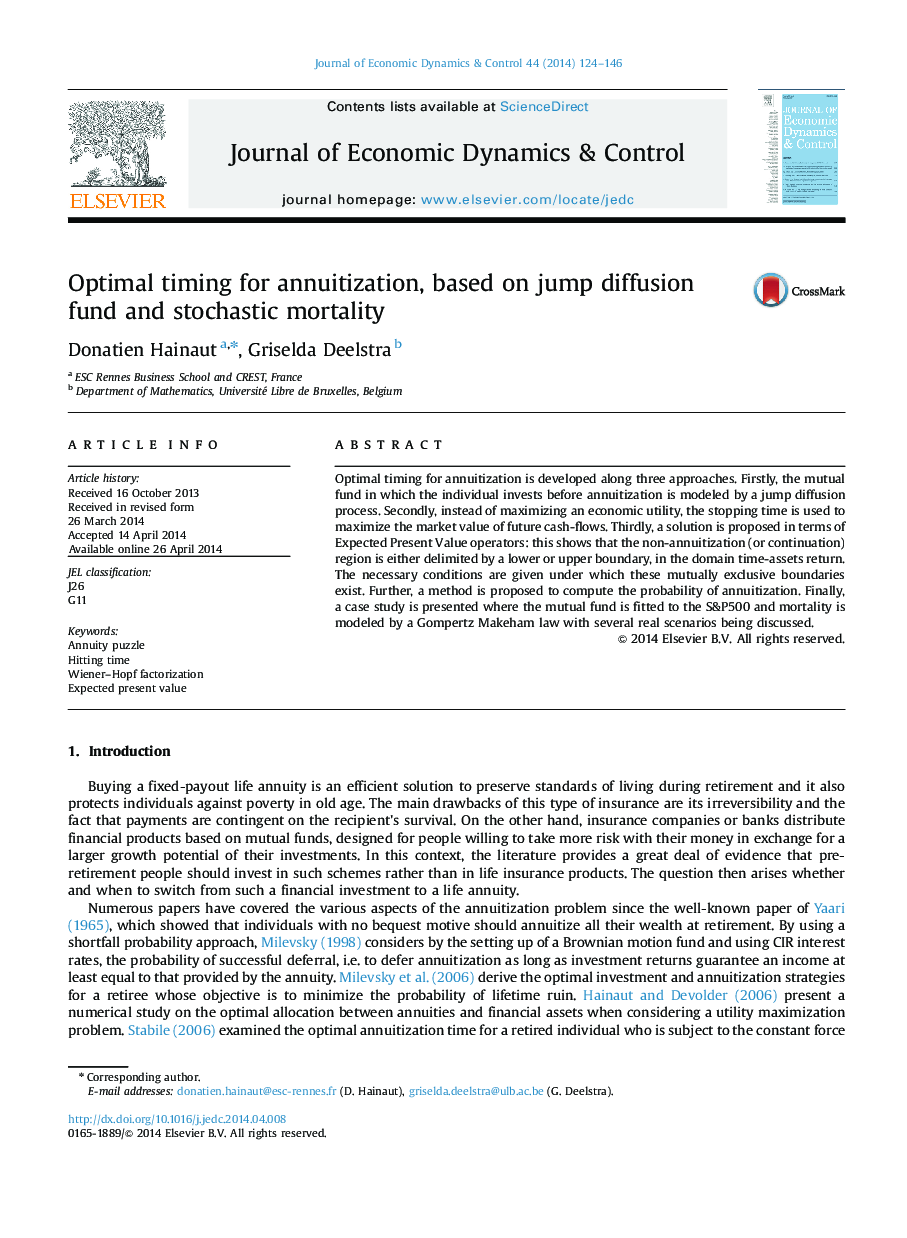| Article ID | Journal | Published Year | Pages | File Type |
|---|---|---|---|---|
| 5098574 | Journal of Economic Dynamics and Control | 2014 | 23 Pages |
Abstract
Optimal timing for annuitization is developed along three approaches. Firstly, the mutual fund in which the individual invests before annuitization is modeled by a jump diffusion process. Secondly, instead of maximizing an economic utility, the stopping time is used to maximize the market value of future cash-flows. Thirdly, a solution is proposed in terms of Expected Present Value operators: this shows that the non-annuitization (or continuation) region is either delimited by a lower or upper boundary, in the domain time-assets return. The necessary conditions are given under which these mutually exclusive boundaries exist. Further, a method is proposed to compute the probability of annuitization. Finally, a case study is presented where the mutual fund is fitted to the S&P500 and mortality is modeled by a Gompertz Makeham law with several real scenarios being discussed.
Related Topics
Physical Sciences and Engineering
Mathematics
Control and Optimization
Authors
Donatien Hainaut, Griselda Deelstra,
